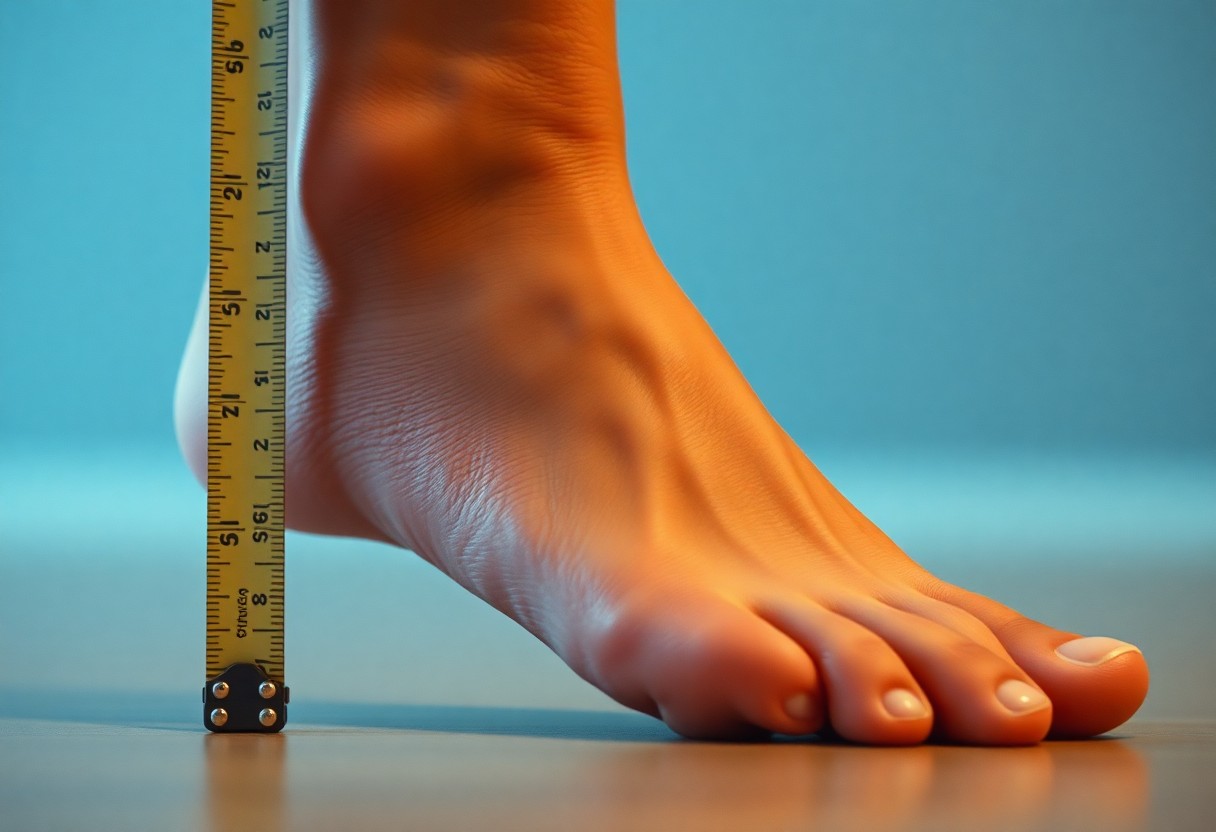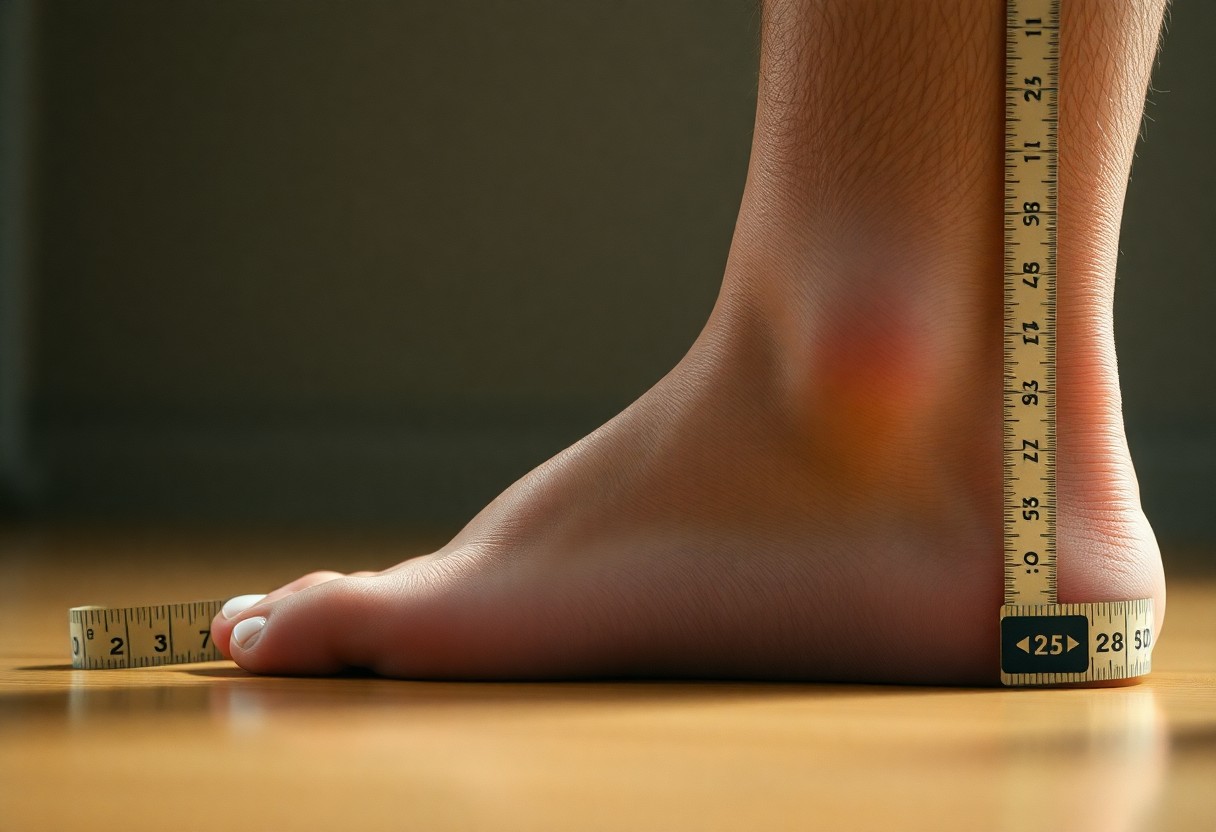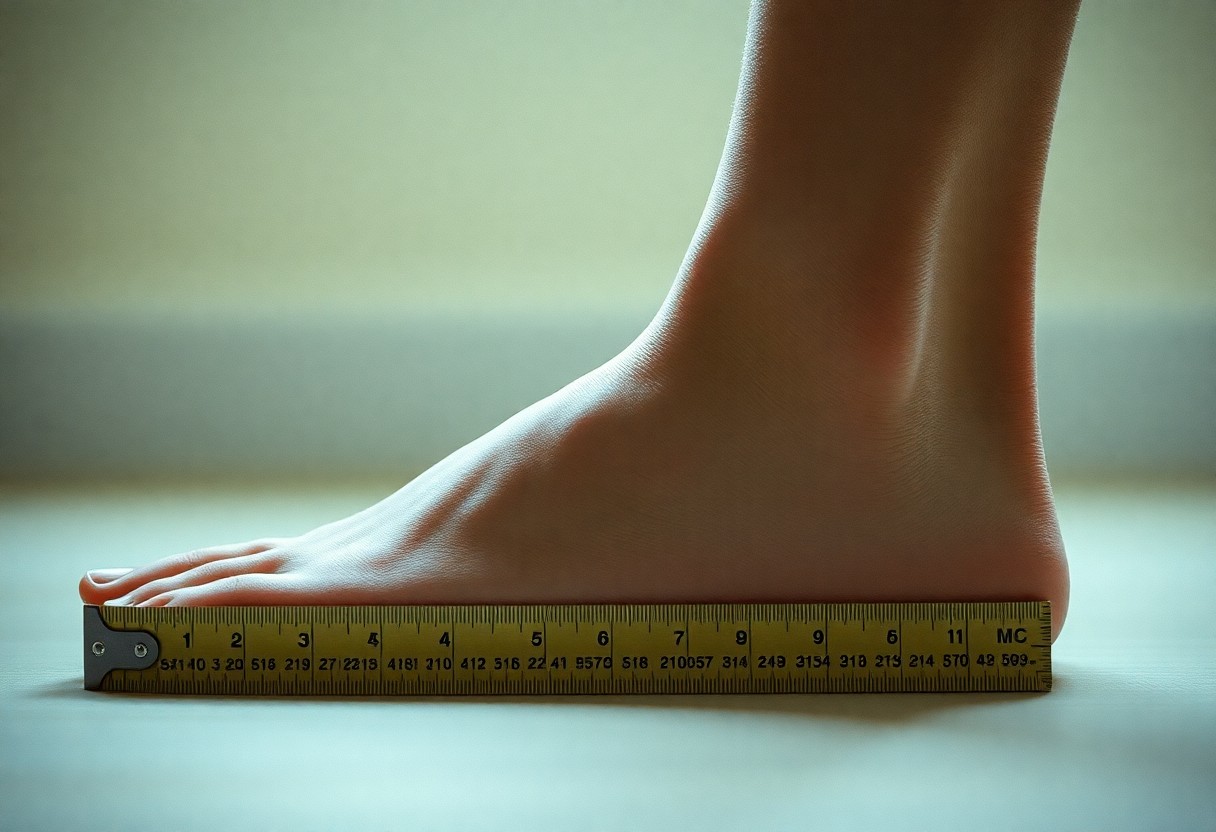Experiencing persistent discomfort in your feet and struggling to find properly fitting shoes is a widespread issue that affects many people. Understanding your foot width is vital for achieving optimal foot health. You might find yourself dealing with symptoms like pressure points on the sides of your feet, shoes that feel excessively tight even when the length is correct, or recurrent blisters forming along the edges of your feet. Ensuring you wear shoes that fit properly is essential, and the first step towards comfort is accurately identifying your foot width. This detailed guide will help you determine if you have wide feet using easy at-home techniques, enabling you to make informed shoe choices and prevent potential foot issues.
Discovering the Importance of Identifying Wide Feet
Having wide feet is a common variation in foot anatomy for many individuals. Factors such as bone structure, muscle composition, and tissue distribution may contribute to a wider foot profile. Understanding this condition is essential for making informed footwear selections and ensuring proper foot health. Individuals with wide feet can experience challenges with mobility, comfort, and even posture, which highlights the necessity of wearing shoes specifically designed for your unique foot shape.
How Genetics Shape Your Foot Width
Your genetic background significantly influences your foot width. Many foot characteristics, such as bone structure and arch height, are inherited from your parents. Studies indicate that about 60% of the differences in foot width can be attributed to genetic factors. This hereditary impact is evident from birth, making it crucial to recognize these traits when selecting footwear that accommodates your foot’s natural shape and width.
The Role of Lifestyle and Environment in Foot Width Changes
It’s a misconception that foot width remains static throughout life; in reality, your daily lifestyle choices can significantly influence your foot width over time. Key contributors include:
- Prolonged standing during work or daily activities
- Weight fluctuations that affect overall foot structure
- Wearing inappropriate footwear that doesn’t accommodate your foot shape
- Physical activities that place stress on your feet
Each of these factors can lead to gradual changes in foot width, underscoring the importance of considering your daily habits when assessing your foot health and comfort.
Your everyday activities and lifestyle choices can profoundly impact the width of your feet. Here are some additional influences to consider:
- High-impact physical exercises, such as running or jumping
- Pregnancy, which often alters foot shape and size
- Aging, leading to changes in foot structure
- Medical conditions that can affect foot health
Recognizing and addressing these factors is essential for taking proper care of your feet and selecting suitable footwear designed to offer comfort and support for your specific foot shape.

Accurate Techniques for Measuring Your Foot Width
To accurately determine your foot width, you can use two primary methods: professional assessments and simple at-home techniques. Getting precise measurements is vital for identifying comfortable footwear that helps prevent foot-related issues. It’s essential to measure your foot width at its widest point, typically around the ball of your foot, to ensure a proper fit and avoid discomfort.
Utilizing Professional Shoe Fitting Techniques for Accuracy
Professional shoe fitting specialists employ tools such as the Brannock Device, which provides exact measurements of both foot length and width. This professional approach ensures accuracy and can identify distinct foot characteristics that influence shoe fit. Once measured, your foot width is compared against standardized sizing charts used by various shoe brands, ensuring you find the best possible fit for your feet.
Simple At-Home Techniques for Foot Measurement
The best time to measure your feet is midday when they have naturally expanded. To begin, gather a sheet of paper, a pencil, and a measuring tape or ruler. Stand on the paper to capture the most precise measurement of your feet.
For accurate at-home measurements, follow these steps: trace the outline of your foot while standing, measure across the widest part of your foot, and compare your measurements to standard size charts. Remember to measure both feet, as it’s common for one foot to be slightly larger than the other. To improve accuracy, measure across the ball of your foot and subtract 1/8 inch from your final measurement.

Recognizing the Key Indicators of Wide Feet
Identifying whether you have wide feet can often be accomplished by being mindful of various signs and symptoms. Pay close attention to specific physical markers and any comfort issues you experience on a daily basis. Research shows that about 30% of individuals wear shoes that are the wrong width, often without realizing they have wide feet. Understanding your foot width is directly related to your overall foot health and comfort during everyday activities, making it crucial to identify and address any discrepancies.
Physical Signs Indicating You May Have Wide Feet
To determine if you have wide feet, closely examine the appearance and behavior of your feet. Look for visible signs, such as foot spillage over the sides of your shoes, indentations on your feet from tight footwear, and a splayed foot shape when standing. Ensure your toes have enough room to move freely and that the ball of your foot fits comfortably without creating pressure points.
Common Discomfort Indicators Associated with Narrow Shoes
Frequent discomfort indicators include recurring blisters on the sides of your feet, numbness in your toes, and ongoing shoe discomfort. You might notice your shoes stretching sideways over time or feel relief when you remove them. These symptoms often indicate that your footwear is too narrow for your foot width, necessitating a reevaluation of your shoe choices.
Recognizing discomfort signals can empower you to make better-informed shoe selections. Neglecting these indicators can lead to long-term foot complications, such as bunions and corns. Your shoes should offer sufficient width from heel to toe, with roughly a thumb’s width of space between your longest toe and the shoe’s tip. If you consistently experience pressure on the sides of your feet, it may be time to seek professional measurement for greater accuracy.
Referencing a Comprehensive Width Chart for Shoe Fitting
Not all feet are the same, and your foot width is just as important as its length when searching for the right shoes. A width chart can be an invaluable tool in correlating your foot measurements with the appropriate shoe width, which typically ranges from AA (narrow) to EE (extra wide). Understanding these measurements can significantly improve your overall shoe comfort.
Deciphering Standard Foot Measurements for Accurate Sizing
To obtain accurate foot measurements, make sure you are standing, as your feet naturally spread under your body weight. Measure your foot width at the widest part of your foot, usually across the ball. For women, a standard width (B) ranges from 3.4 to 3.6 inches, while for men, a standard width (D) usually falls between 3.8 to 4.0 inches.
Understanding the Variations in Shoe Width Sizes
Width size variations can differ by up to 1/4 inch between letter categories (A, B, D, E). Your feet may require different widths based on their unique shapes. It’s not uncommon for one foot to be slightly wider than the other. Always prioritize fitting shoes to your wider foot to ensure maximum comfort and support.
Given the natural fluctuations in foot size during the day, it’s advisable to measure your feet in the afternoon or evening when they are at their largest. Foot width can also change due to factors like weight changes, pregnancy, or aging, making regular measurements essential for proper shoe fitting.
Reflecting on Past Shoe-Fitting Experiences for Better Choices
Your past experiences with shoe fitting can provide crucial insights into your foot width. If you frequently experience discomfort on the sides of your shoes or find yourself needing to buy larger sizes just to accommodate width, these signs are significant indicators. Many individuals with wide feet report needing to purchase shoes 1-2 sizes larger than their actual foot length to meet their width requirements.
Evaluating Your Current Footwear for Width Suitability
Above all, it’s imperative to assess your current shoes for their width compatibility. Stand on a piece of paper and trace the outline of your foot. If you observe that your foot spills over the sole of your shoe when compared to this tracing, it is likely that you have wide feet. This simple test can help prevent future foot complications and guide you toward more suitable shoe options.
Identifying Pressure Points Within Your Footwear
Approximately 72% of individuals wear incorrectly sized shoes, often resulting in uncomfortable pressure points. You can identify these problematic areas by looking for excessive wear patterns on your current shoes or areas of redness on your feet after prolonged use.
Recognizing that pressure points can lead to long-term foot complications is crucial. Regularly monitoring tight areas—especially across the ball of your foot and the sides—can help prevent painful conditions like bunions and corns. Quick relief from pressure indicates that your shoes may be too narrow, suggesting it’s time to explore wider options for comfort.

Optimal Timing for Accurate Foot Measurements
For reliable results, it’s crucial to take accurate foot measurements at specific times throughout the day. Naturally, your feet change size due to physical activity and fluid retention. Taking measurements consistently at the same time will yield trustworthy shoe sizing data.
Morning Measurements for Establishing Baseline Width
To determine your baseline foot width, measure your feet first thing in the morning. After a night of rest, your feet are usually at their smallest size, allowing for a measurement that reflects the minimum width necessary for comfortable footwear.
Evening Measurements for Ensuring Optimal Fit
Before purchasing shoes, it is best to measure your feet in the evening when they are likely to be at their largest size. Throughout the day, your feet can expand by up to 8% due to walking and standing, making it essential to consider this factor when ensuring a comfortable fit.
Additionally, it’s important to note that your evening measurements may be up to half a size larger than your morning measurements. This discrepancy emphasizes the importance of always selecting shoes based on your evening foot measurements to avoid discomfort and potential foot health issues.
Essential Insights for Understanding Your Foot Width
Determining whether you have wide feet involves straightforward steps that you can undertake at home or with professional assistance. Your foot measurements, daily comfort in shoes, and visible signs such as bulging sides can provide valuable insights into whether you need wide-width footwear. Measure your feet with a ruler, look for red marks after wearing shoes, or consult a shoe store for professional sizing. By understanding your foot width, you can select shoes that fit better, thus preventing discomfort and potential foot issues. Making educated decisions about your footwear based on these indicators will ensure that your feet remain healthy and comfortable.
Common Questions Regarding Foot Width Explained
Q: How can I accurately measure my foot width at home?
A: Start by placing a blank piece of paper on a flat surface, step onto it with your bare foot, and trace the outline. Measure the widest part of the outline using a ruler. It’s best to perform this measurement for both feet in the evening when they are at their largest. A width exceeding 4 inches for men or 3.5 inches for women typically indicates wide feet.
Q: What physical signs suggest that I might have wide feet?
A: Look for these clear indicators: your toes feel cramped in regular-width shoes, you notice red marks on the sides of your feet after wearing shoes, your shoes stretch sideways over time, or you feel pressure on the sides of your feet. All these symptoms suggest your shoes may be too narrow for your foot width.
Q: Is the wet foot test a reliable method for checking for wide feet?
A: Yes, the wet foot test can be effective. Wet your bare foot and step onto a brown paper bag or dark surface. If your footprint reveals a broad middle section that takes up most of the print’s width, it is likely that you have wide feet. You can compare your footprint width with standard size charts available online or in shoe stores to confirm your foot width classification.
The Article How to Determine If You Have Wide Feet: Simple Methods and Signs to Check appeared first on My Shoes Finder
The Article Wide Feet: Simple Methods and Signs to Check Your Size Was Found On https://limitsofstrategy.com



Comments are closed